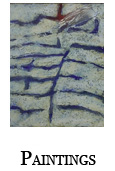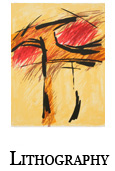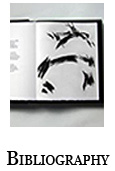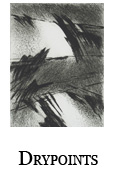
Ranný’s countryside is his native Czech-Moravian Highlands. This inherited landscape signed his birth certificate and clung to his soul. Or rather, to put it more harshly and adequately, it rubbed itself in it. It is a place of apple trees, those trees that bleed in late summer; of stones, too. The Svratka River flows through the village, in which the artist was born. It feels apt to point out that it used to be called Shwartzava, from the German word schwarz, a black river.
Let’s come back to ravens, those heraldic black birds of graphic art. They are brought to mind, when we get to know that one of the landscapes, which Ranný touches with the whole of his body, surrounds a village, which nowadays is merging with the city, but remains to be called Ptáčov, a birds’ place, a name wearing wings.
The author of this note is no art historian. He does know, however, that most of Ranný’s prints were made in the technique of dry point, yet he is not quite sure if the point is sharp enough to weave such complex skeins. He almost thinks it must be, just look at all those continuous threads. They have no knots to end, they are endless like time.
What else to say to avoid repeating what has already been said by the artist in his own idiom, in the stern black refracting into so many beautiful and sensitive grays?
Be silent and observe. See the landscape of yore.
Jan Skácel,
Gallery Old Town Hall, Brno 1989



